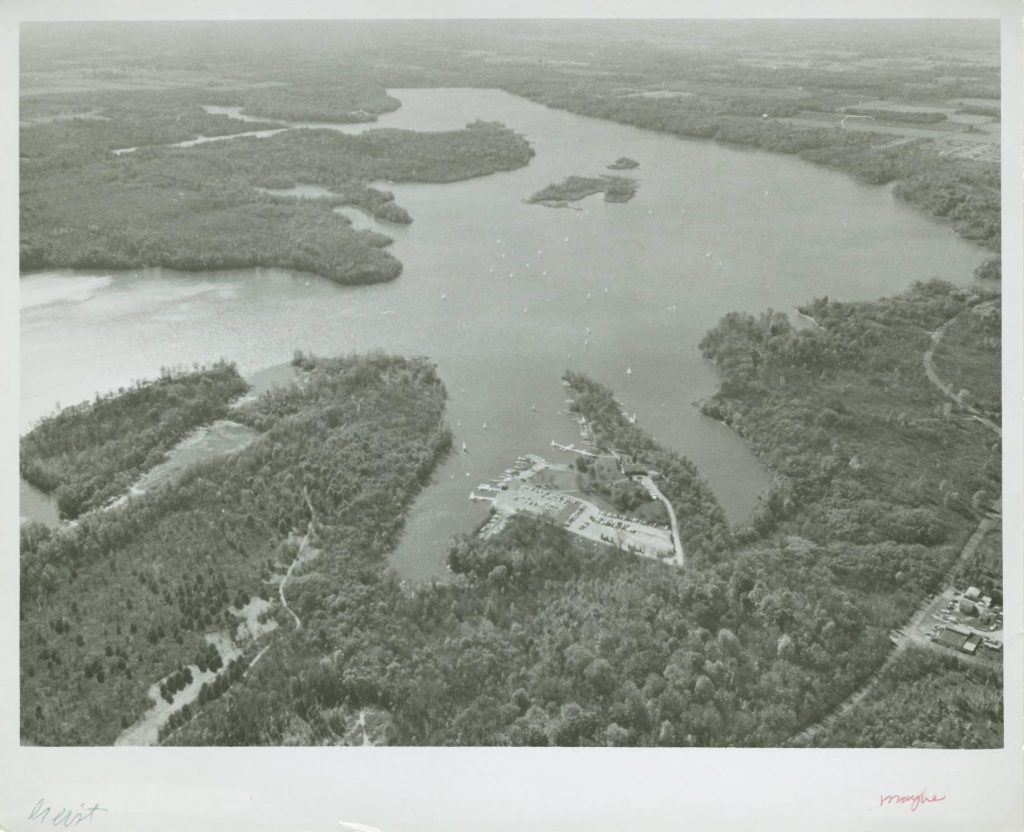Early historians described pioneer as having an abundance of swamps, bottoms, bayous and sloughs. Their accounts noted that these areas, now known as wetlands, were viewed as nothing more than wastelands that required draining to become productive farms. Drained wetlands were also deemed healthier for the growing city and its populace. These attitudes were not unique to Indianapolis or to the 19th century. Federal, state, and local governments have long encouraged and engaged in wetland destruction. In Indiana, an estimated 87 percent or approximately 4.85 million acres of an original 5.6 million acres of wetlands have been destroyed. One can reasonably assume that the Indianapolis area has lost a similar percentage.
Still commonly known as swamps, marshes, bayous, and sloughs, wetlands constitute transitional zones between dry land and deep water. These semiaquatic areas occur along rivers, streams, lakes, and other fresh and saltwater bodies. They also occur in isolated situations such as natural depressions in the landscape. One can readily observe wetlands along , , Buck Creek, and other streams that flow through the city and county. Wetlands can also be observed at some of the city’s parks including Eagle Creek, Holliday, and Southwestway parks. Wetland plants such as cattails, water lilies, and duckweed can be seen easily in Indianapolis.
Like sponges, wetlands temporarily store floodwater and surface runoff that overflow riverbanks. They also provide shoreline stabilization and protection from erosion. Through various biological and chemical processes, wetlands remove nutrients such as phosphorous and nitrogen from the water before it flows into adjacent lakes and streams and processes some chemical and organic wastes from water. Thus, Indianapolis area wetlands, especially above Eagle Creek, , and reservoirs, contribute to the city’s water quality and its ability to control flooding.

Wetlands provide habitat for innumerable fish and wildlife species and constitute the most productive areas for these resources. Remaining wetlands along Indianapolis’ creeks, rivers, and reservoirs provide vital nesting, resting, spawning, and feeding areas for both fish and wildlife. A large variety of wetland birds including raptors, songbirds, ducks, geese, and other migratory birds require wetlands for all or part of their habitat requirements. Most of these birds can be observed along White River or Fall Creek at various times of the year; examples include the osprey, great blue heron, and scarlet tanager. Some mammals, including beaver and muskrat, live almost entirely in wetlands, while other species such as white-tailed deer use wetlands for food, shelter, and travel ways. Evidence of these animals can easily be observed along Indianapolis’ larger streams and reservoirs. In Indiana approximately 180 plant and animal species that occur naturally in wetlands are listed by the state as endangered, threatened, or rare. A few state-listed plants that can be seen in Indianapolis include tufted hairgrass, goldenseal, and brook-pimpernel; examples of state-listed animal species include bald eagle, black-crowned night heron, and spotted turtle. Recent surveys by the United States Fish and Wildlife Service indicate that the federally endangered Indiana bat utilizes Fall Creek at Fort Benjamin Harrison for summer habitat.
Although federal regulations and incentive programs have helped, wetlands continued to be lost in Indianapolis and throughout the nation to various development activities. Attempts to legislate wetland protection in Indiana have met with failure in the General Assembly, although a few cities and towns have local ordinances that regulate the development of wetlands. As of 1994, Indianapolis does not have a wetlands ordinance or a zoning ordinance that directly addresses wetlands.
*Note: This entry is from the original print edition of the Encyclopedia of Indianapolis (1994). We are currently seeking an individual with knowledge of this topic to update this entry.

Help improve this entry
Contribute information, offer corrections, suggest images.
You can also recommend new entries related to this topic.
